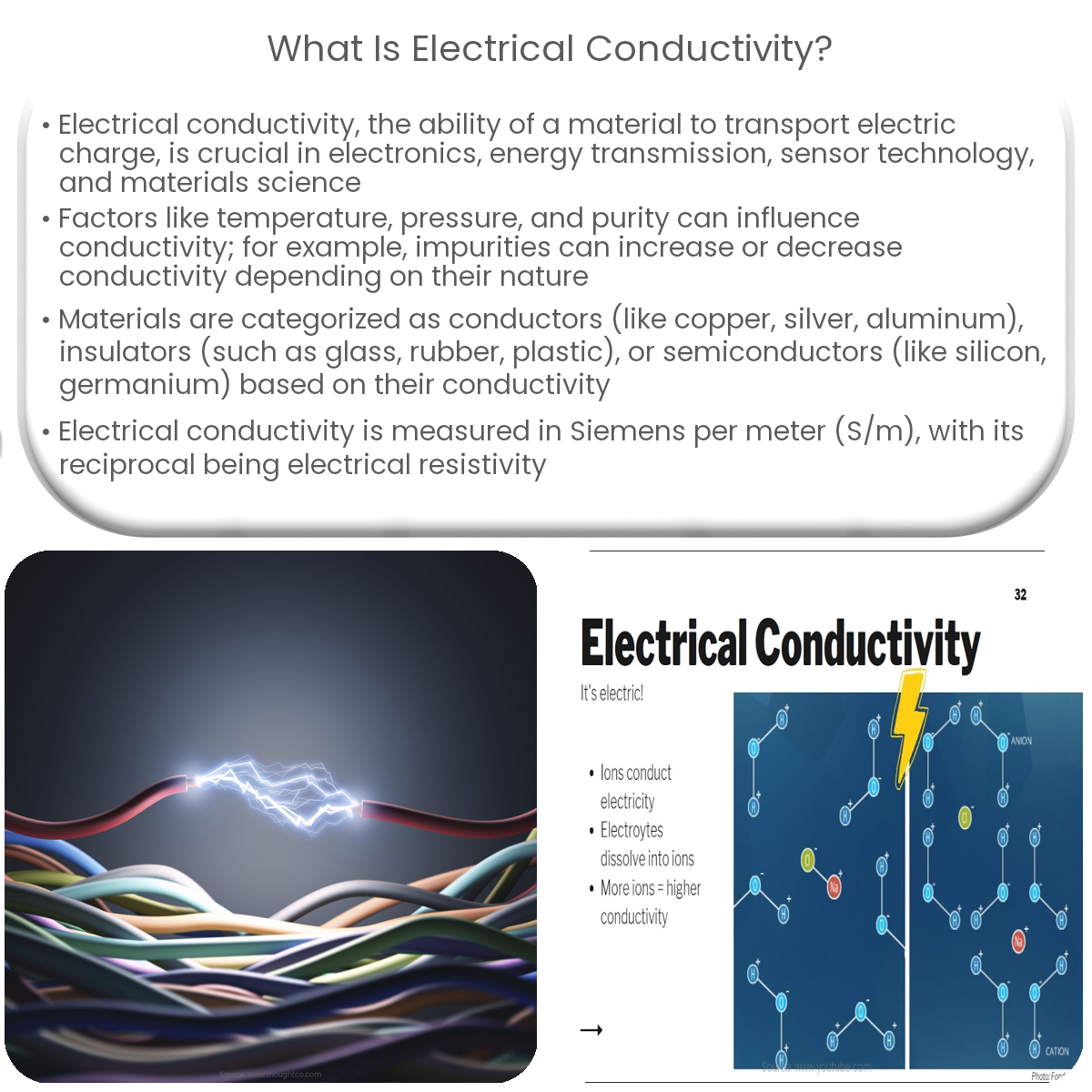Electrical conductivity is a material’s ability to conduct electric current, influenced by material type, temperature, and impurities.
Understanding Electrical Conductivity
Electrical conductivity is a property of materials that describes their ability to conduct electric current. This property is essential in determining the suitability of materials for various electrical applications, from conductors to insulators. In this article, we will explore the concept of electrical conductivity, its measurement, and the factors influencing it.
Definition of Electrical Conductivity
Electrical conductivity (σ) is defined as the measure of a material’s ability to allow the flow of electric charge. It is the reciprocal of electrical resistivity (ρ), which is a measure of a material’s opposition to the flow of electric current. Mathematically, the relationship between conductivity and resistivity can be represented as:
σ = 1 / ρ
Electrical conductivity is expressed in units of Siemens per meter (S/m).
Factors Influencing Electrical Conductivity
Several factors can affect a material’s electrical conductivity:
- Material Type: Different materials have different atomic structures, which influence their conductivity. Metals, such as copper and silver, have high conductivity, while insulators, like rubber and glass, have low conductivity.
- Temperature: Conductivity generally decreases with increasing temperature for metals, as increased thermal vibrations impede electron movement. However, for semiconductors and insulators, conductivity increases with temperature.
- Impurities: The presence of impurities in a material can either increase or decrease its conductivity, depending on the type and concentration of the impurities.
Measuring Electrical Conductivity
Electrical conductivity can be measured using various techniques, such as the four-point probe method or the eddy current method. In the four-point probe method, a constant current is passed through a material, and the voltage drop across it is measured. The conductivity can then be calculated using the material’s dimensions and the measured voltage.
Applications of Electrical Conductivity
Understanding electrical conductivity is crucial for various applications, including:
- Conductors: Materials with high electrical conductivity, such as copper and aluminum, are used for conducting electric current in electrical wiring and power transmission lines.
- Insulators: Materials with low electrical conductivity, such as rubber, glass, and plastic, are used to prevent the flow of electric current and to protect electrical equipment and users.
- Semiconductors: Materials with intermediate electrical conductivity, such as silicon and germanium, are used in electronic devices like transistors, diodes, and integrated circuits.
- Sensors: Electrical conductivity measurements can be used to monitor and control processes, such as water quality testing or material analysis.
In conclusion, electrical conductivity is a key property of materials that determines their ability to conduct electric current. Knowledge of conductivity helps in selecting appropriate materials for various electrical applications and understanding their behavior under different conditions.


